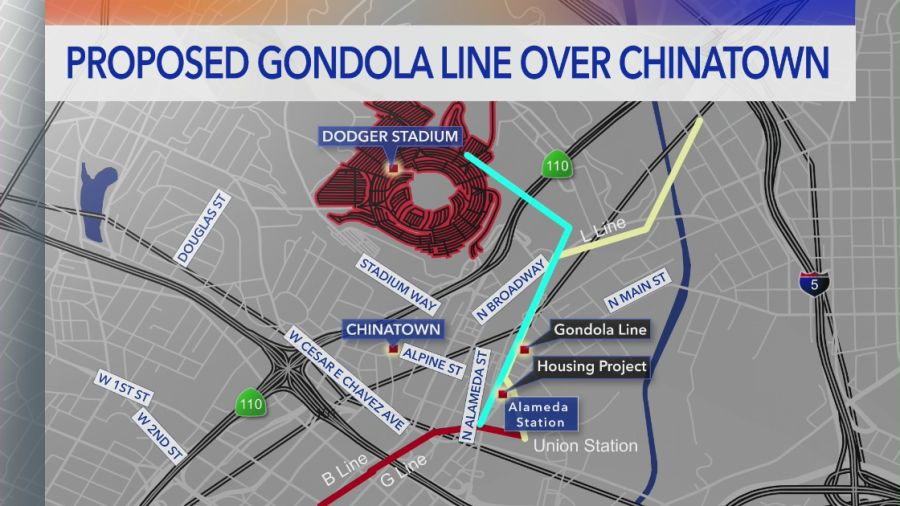The Metro Board of Directors will meet Thursday to consider approving a the environmental impact report connected to a controversial transit project that would connect Dodger Stadium to downtown Los Angeles.
The project proposal links the stadium to Union Station and Chinatown at Los Angeles State Historic Park via a suspended aerial gondola system funded by Frank McCourt and his son, Drew. Frank owned the Los Angeles Dodgers from 2004 to 2012. L.A. Metro would plan the logistics under the current plan.
L.A. Metro says the gondola could transport up to 5,000 people per hour each direction on game days in a 1.2-mile journey that takes about seven minutes — though many see it as a “tourist attraction” rather than a reliable transit system.
Supporters of the system tout its zero-emission capabilities and its ability to cut down on traffic concerns on Dodgers’ game days.
Officially known as Los Angeles Aerial Rapid Transit, the project has seen rabid opposition from residents whose homes will be underneath and nearby the proposed pathway of the gondola. A local group dubbed the Stop The Gondola Coalition has blasted the Metro and the McCourts for a supposed lack of transparency surrounding the project.
“The construction price alone is likely to be $500 million, and even more money will be needed for ongoing maintenance and repairs,” a section of the coalition’s website reads. “History has shown that these projects always run past schedule, go way over budget, and leave taxpayers stuck with a huge bill.”
“It’s been in Ohio as early as the mid-1850s at least, brought in as an ornamental plant because of its unique foliage and white flowers,” Gardner said. “It was actually planted in people’s landscaping, and it has been spreading.”
The advocacy group instead encourages public officials to look at enhancing stadium shuttles in order to quell traffic concerns on game days. The trek to Chavez Ravine has notoriously been a pain to baseball fans throughout the Southland with a lack of public transit options to get to the ballpark.
If the environmental impact report is approved, the project would then move to public officials in the form of the L.A. City Council and Parks and Recreation Department.















































